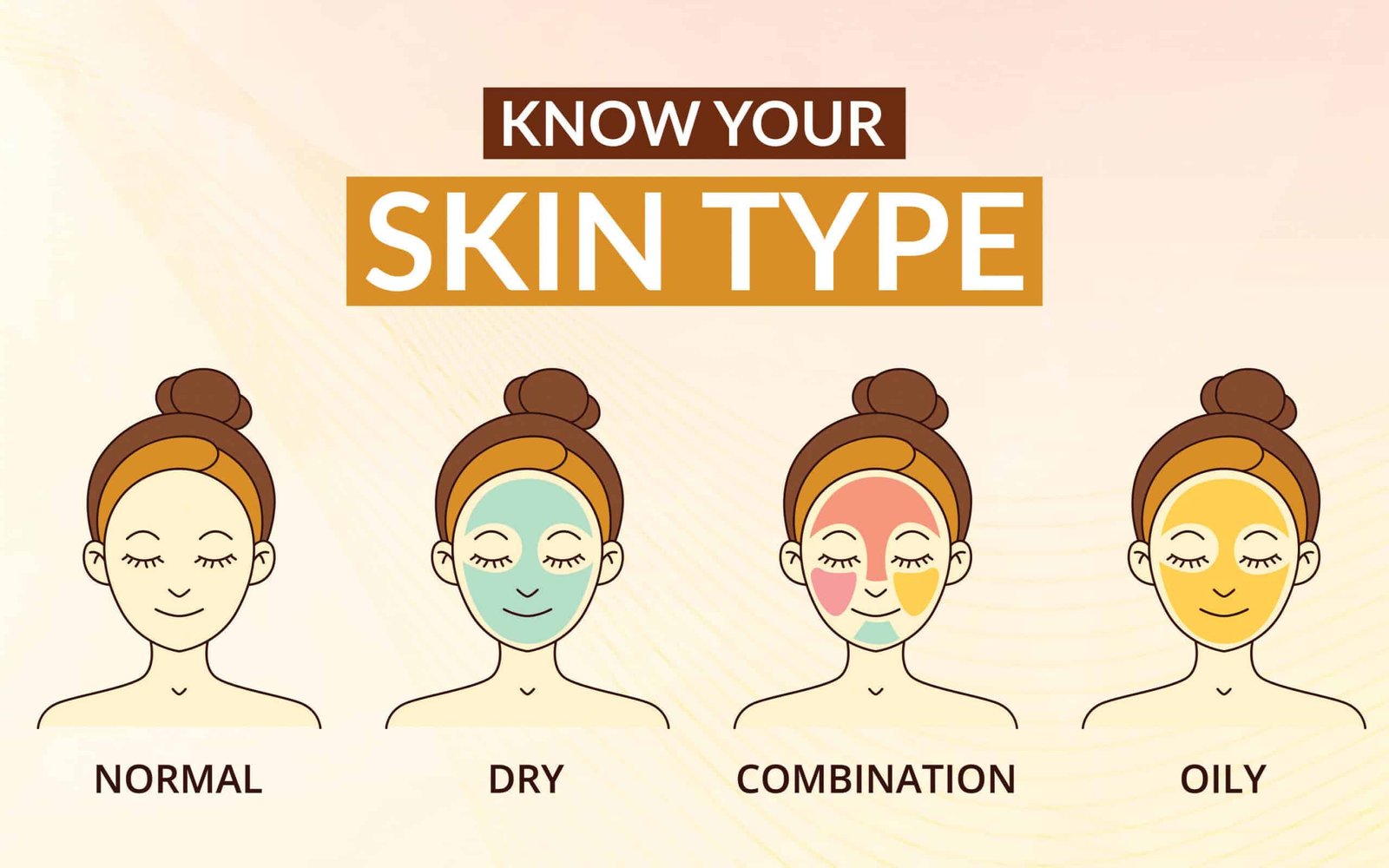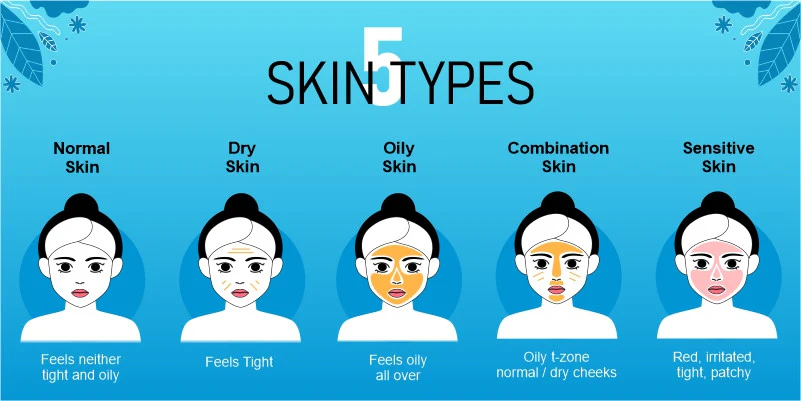The Importance of Knowing Your Skin Type
Understanding your skin type is essential for creating an effective skincare routine. Each skin type has unique needs, and using the wrong products can lead to irritation, breakouts, or dryness. By identifying your skin type, you can choose products and treatments that work best for you, helping you achieve a healthy, balanced complexion.
Identifying the Four Main Skin Types
There are four primary skin types: oily, dry, combination, and normal. Each type has distinct characteristics that determine how your skin looks, feels, and reacts to different products.
1. Oily Skin
Oily skin is characterized by an excess production of sebum, the natural oil produced by your skin. This skin type often appears shiny, particularly in the T-zone (forehead, nose, and chin), and is more prone to acne and blackheads due to clogged pores. If your skin feels greasy shortly after washing and you struggle with large, visible pores, you likely have oily skin.
Skincare Tips for Oily Skin:
- Use a gentle, foaming cleanser to remove excess oil without stripping your skin.
- Incorporate a lightweight, oil-free moisturizer to keep your skin hydrated.
- Look for products containing salicylic acid or benzoyl peroxide to help control breakouts.
- Always use a non-comedogenic sunscreen to prevent clogging your pores.

2. Dry Skin
Dry skin lacks the necessary moisture to keep it soft and supple. This skin type often feels tight, rough, and may show signs of flaking or redness. Dry skin can also be more sensitive to environmental factors like wind and cold weather, leading to irritation and discomfort. If your skin feels parched and you notice fine lines or a dull complexion, you likely have dry skin.
Skincare Tips for Dry Skin:
- Use a hydrating cleanser that doesn’t strip your skin of its natural oils.
- Apply a rich, emollient moisturizer to lock in hydration.
- Look for products with hyaluronic acid, glycerin, and ceramides to boost moisture levels.
- Avoid hot showers and harsh exfoliants, which can further dry out your skin.
3. Combination Skin
Combination skin is a mix of oily and dry areas, typically with an oily T-zone and drier cheeks. This skin type can be tricky to manage because it requires balancing two different needs. If your skin is shiny in some areas but feels dry or tight in others, you likely have combination skin.
Skincare Tips for Combination Skin:
- Use a gentle cleanser that balances oil production without drying out your skin.
- Apply a lightweight moisturizer in oily areas and a richer cream in dry areas.
- Incorporate products with niacinamide to regulate oil production and improve skin texture.
- Use targeted treatments, like a mattifying primer for your T-zone and a hydrating serum for your cheeks.
4. Normal Skin
Normal skin is well-balanced, with neither excessive oiliness nor dryness. It typically has a smooth texture, even tone, and is less prone to sensitivity or breakouts. If your skin feels comfortable throughout the day without the need for frequent touch-ups or additional hydration, you likely have normal skin.
Skincare Tips for Normal Skin:
- Use a gentle cleanser to maintain your skin’s natural balance.
- Apply a lightweight moisturizer to keep your skin hydrated.
- Incorporate antioxidant-rich products, like vitamin C serum, to protect against environmental damage.
- Continue with regular sunscreen application to maintain your skin’s health and prevent premature aging.
Additional Skin Considerations
In addition to the four main skin types, some people may also experience conditions like sensitive skin or acne-prone skin. These concerns require special care and attention in your skincare routine.
Sensitive Skin: This skin type reacts easily to products and environmental factors, often resulting in redness, itching, or burning. If you have sensitive skin, choose fragrance-free, hypoallergenic products and perform patch tests before trying new products.
Acne-Prone Skin: This type is more likely to develop pimples, blackheads, and whiteheads. Use non-comedogenic products and include acne-fighting ingredients like salicylic acid, benzoyl peroxide, and retinoids in your routine.
Conclusion
Understanding your skin type is the first step towards achieving your skincare goals. By recognizing the characteristics of your skin and tailoring your routine accordingly, you can address your skin’s unique needs and maintain a healthy, glowing complexion. Whether you have oily, dry, combination, or normal skin, the right products and practices can make all the difference in your skin’s appearance and health.



